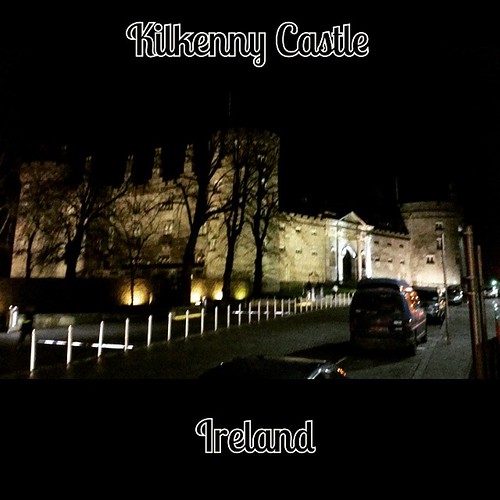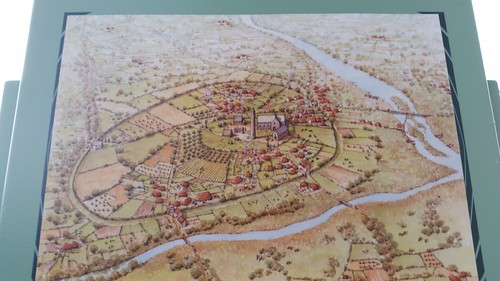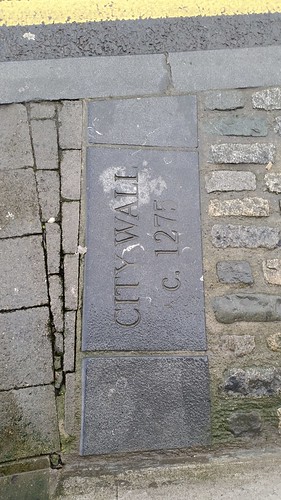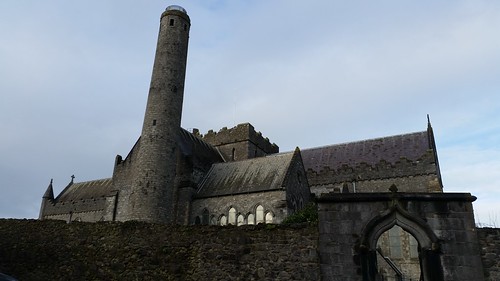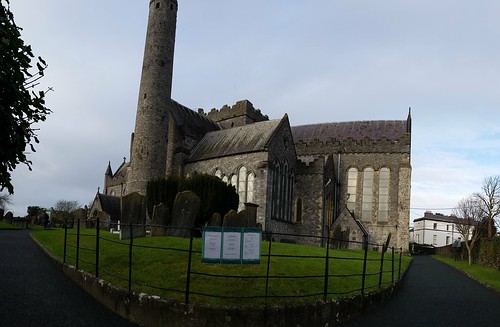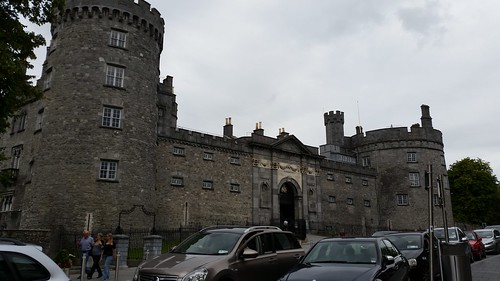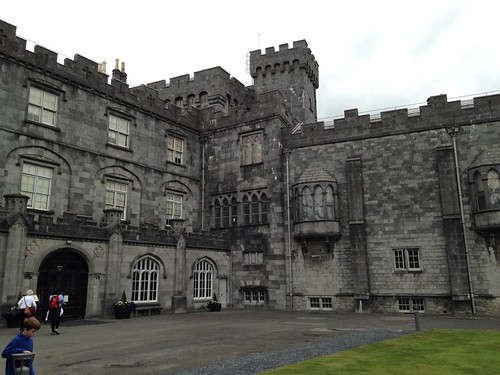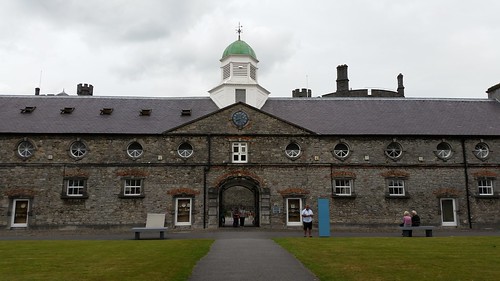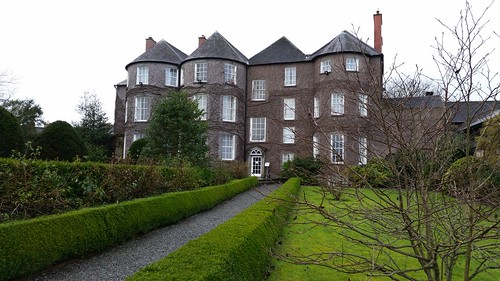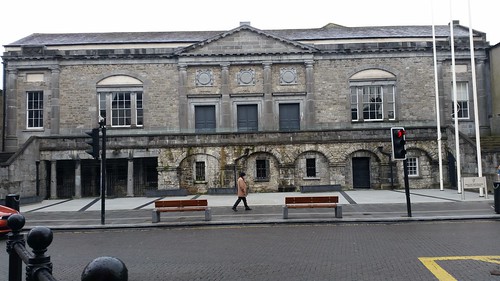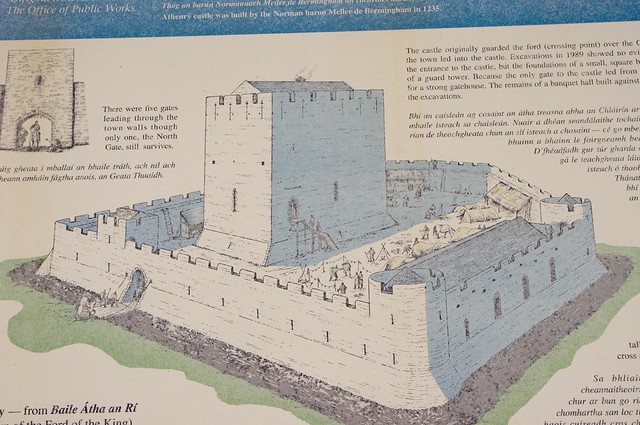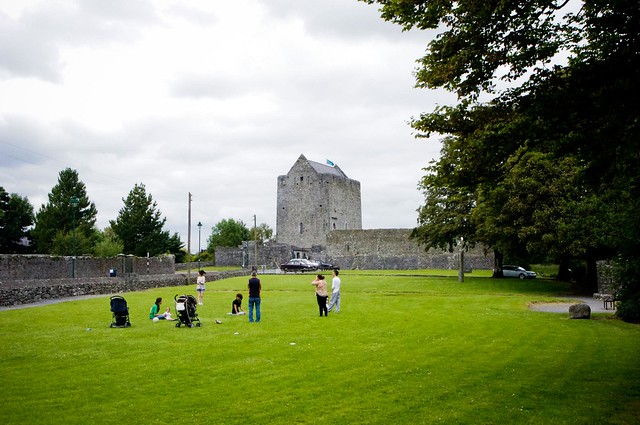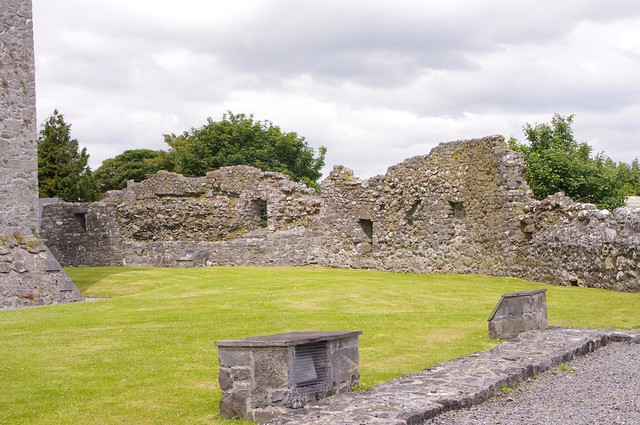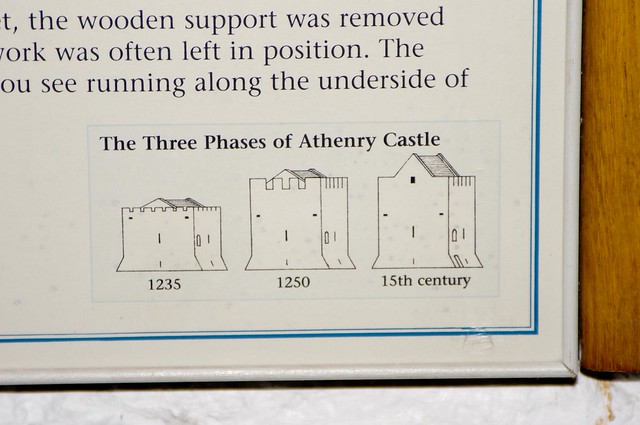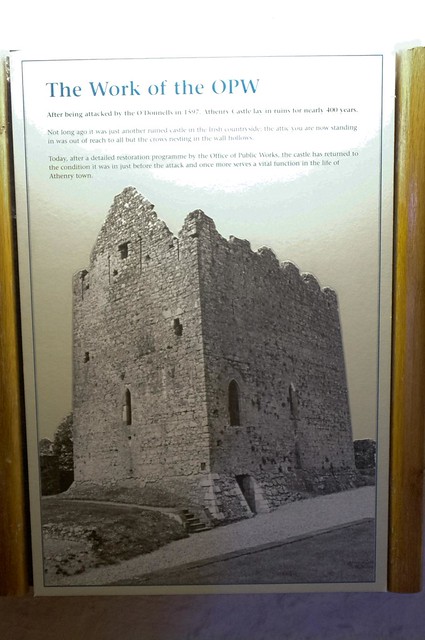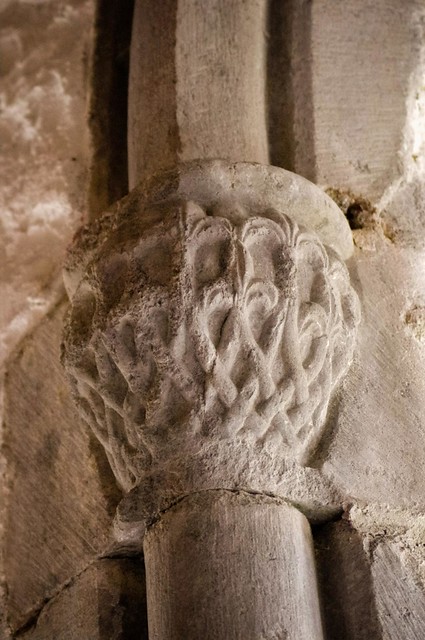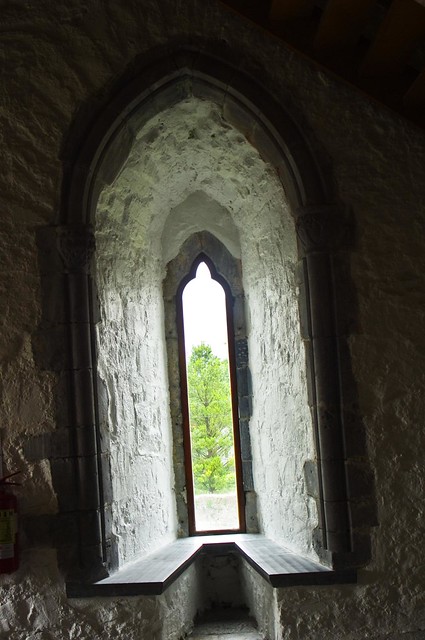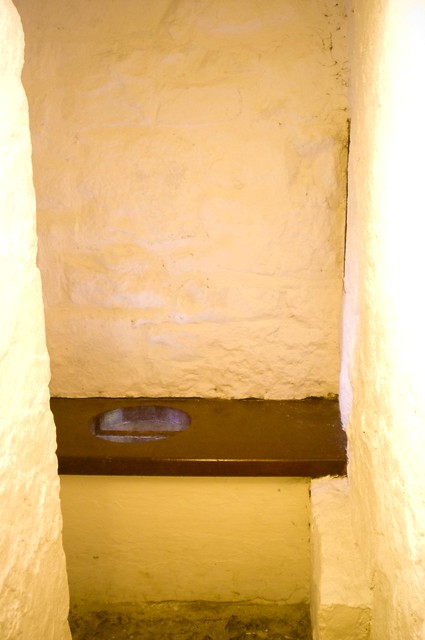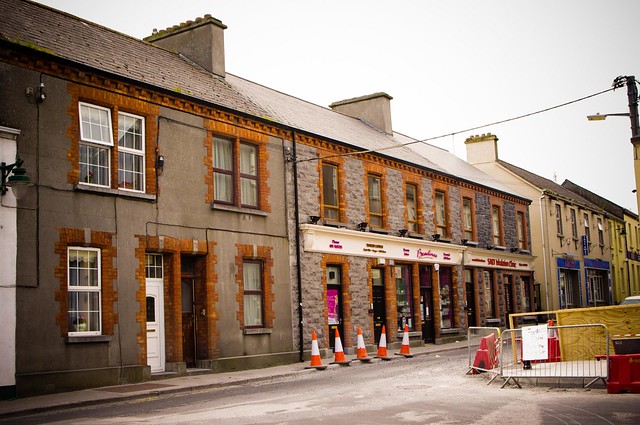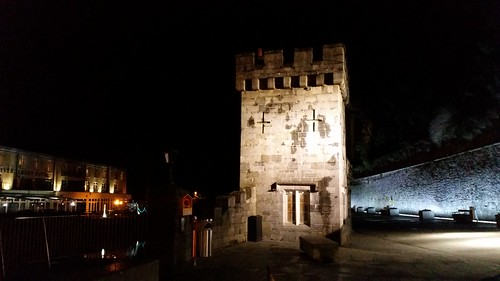
Fortification along the River Nore at Night
In yesterday’s post, I gave a history of Kilkenny and lots of the pictures taken during the day time. B and I actually spent the night at the Ormonde hotel in Kilkenny – and were pleasantly surprised with our last minute booking. The room was great and the hotel has a great breakfast selection. I would recommend staying there if you get the chance.
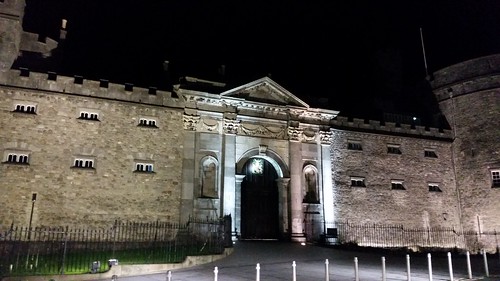
Kilkenny Castle entry at night
Staying over night, of course, gave us a chance to wander around at night and experience some of the sites and bar scene. We wandered from our hotel and got a few pictures of the Castle above, before going across the river and passing the newly remodeled River court hotel (below) which re-opened this spring.
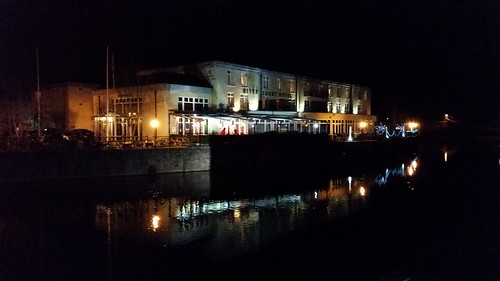
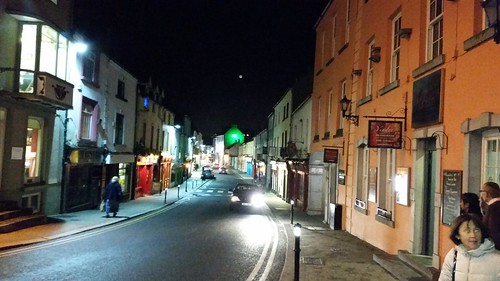
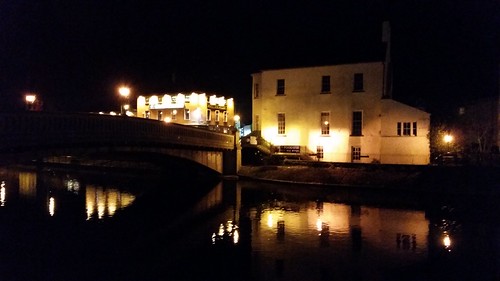
We walked up the main street, and headed to the Kilford Arms hotel. Now the hotel I can’t say much – as I’ve never stayed there, but inside the hotel, there’s a bar which the architecture is simply awesome. The bar re-uses old Abby (cloister?) ruins as features in the architecture. It totally impressed B, and we enjoyed both the atmosphere and the charm of the decor. Some photos from inside below:

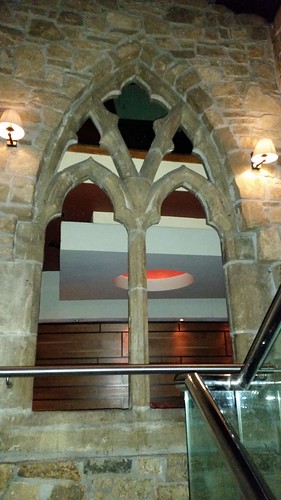
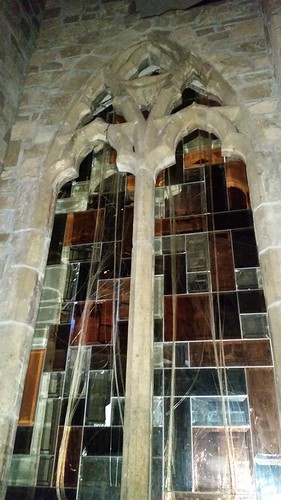
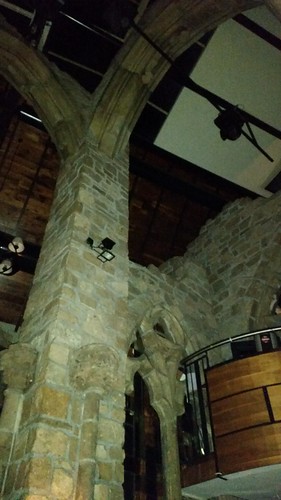
Once we left there, we headed back toward the river and passed several bars, before popping into another bar to warm up and try the flaming Pig whiskey. Then we headed on to Bridies, which we were hoping to get into once it opened.
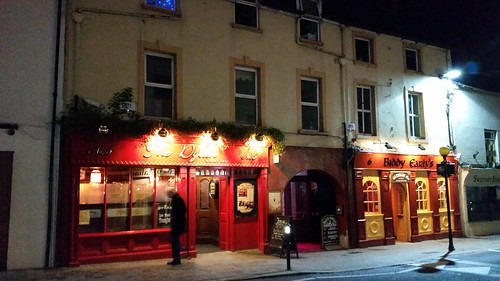
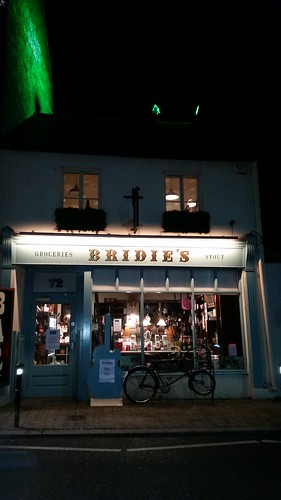
Bridies was interesting – the front entry way area was like an old general store / candy shop. Filled with old style goodies in floor to ceiling shelves. However, as you crossed through the “western style” swing doors to the back room, you found a long bar with comfortable seating in the pub. Here, we stopped for our third whisky of the night Paddy’s this time and had a few laughs with the local musicians. It was a classic Irish sing along – and lovely B graced us with a solo of O Solo Meo! Despite saying she couldn’t sing, it was lovely!
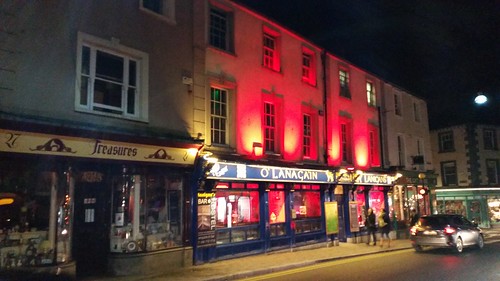
From here, we headed to an Italian Restaurant where B said it was just like home (the Best Italian I’ve ever had for sure!). I didn’t get a picture (sadly) but totally enjoyed it. (there are actually several good Italian restaurants in Kilkenny)
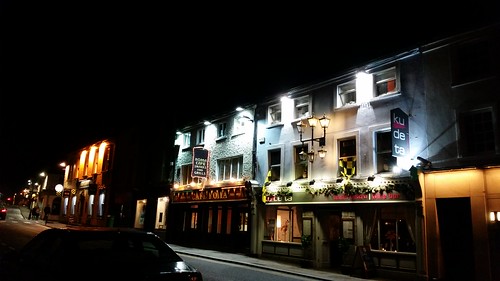
As we wandered back to the hotel with full bellies, we went into the Left Bank (quite full for an evening in January),
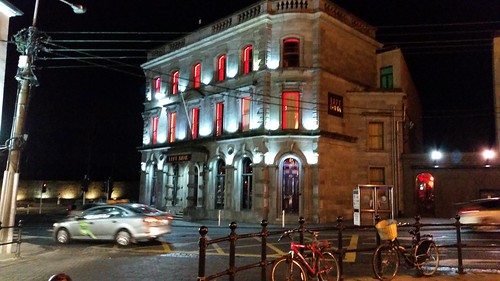
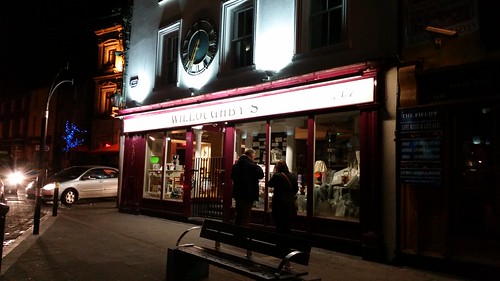
And then back up past a shop (onlookers) before heading to bed.
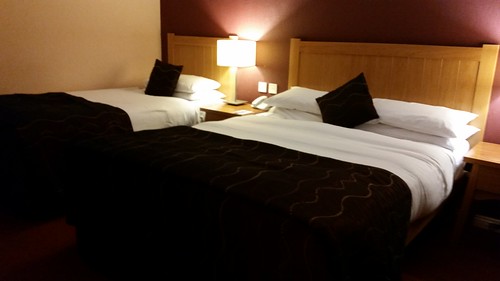
The next morning, we headed back to Dublin, Renewed, and happy to have gotten a breath of fresh air. 🙂 I’ll have to come back to Kilkenny and explore further – perhaps this summer.

